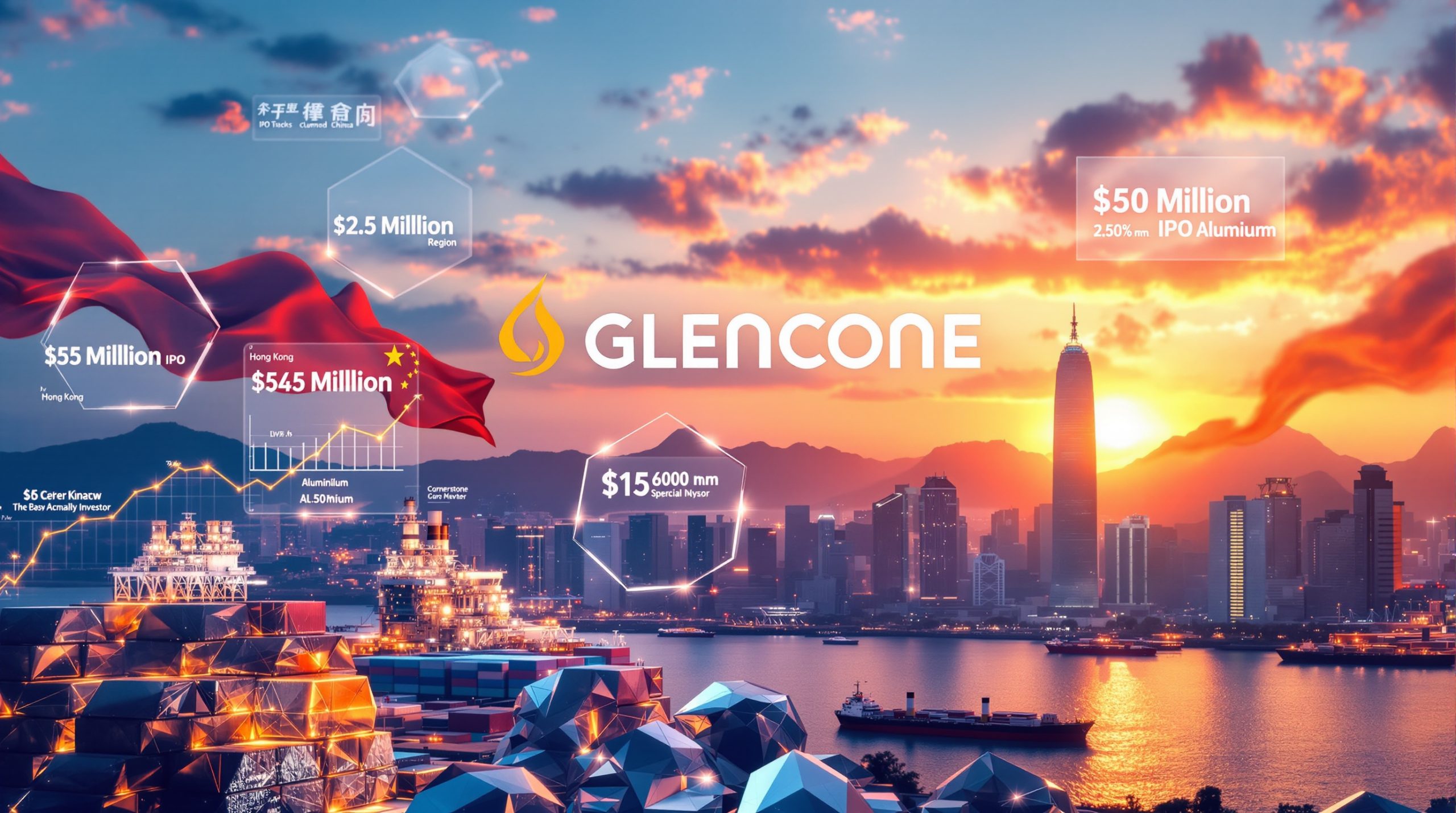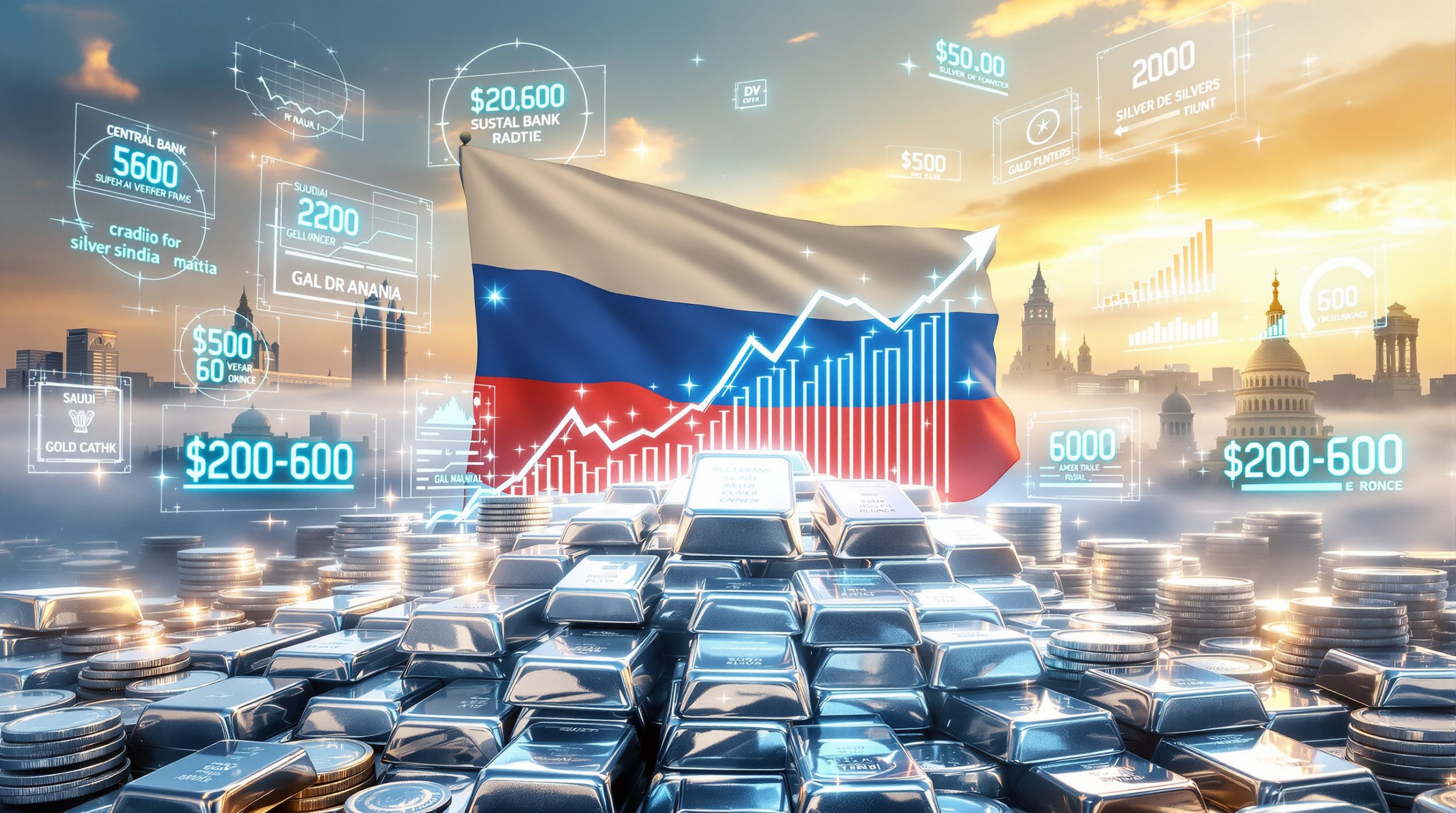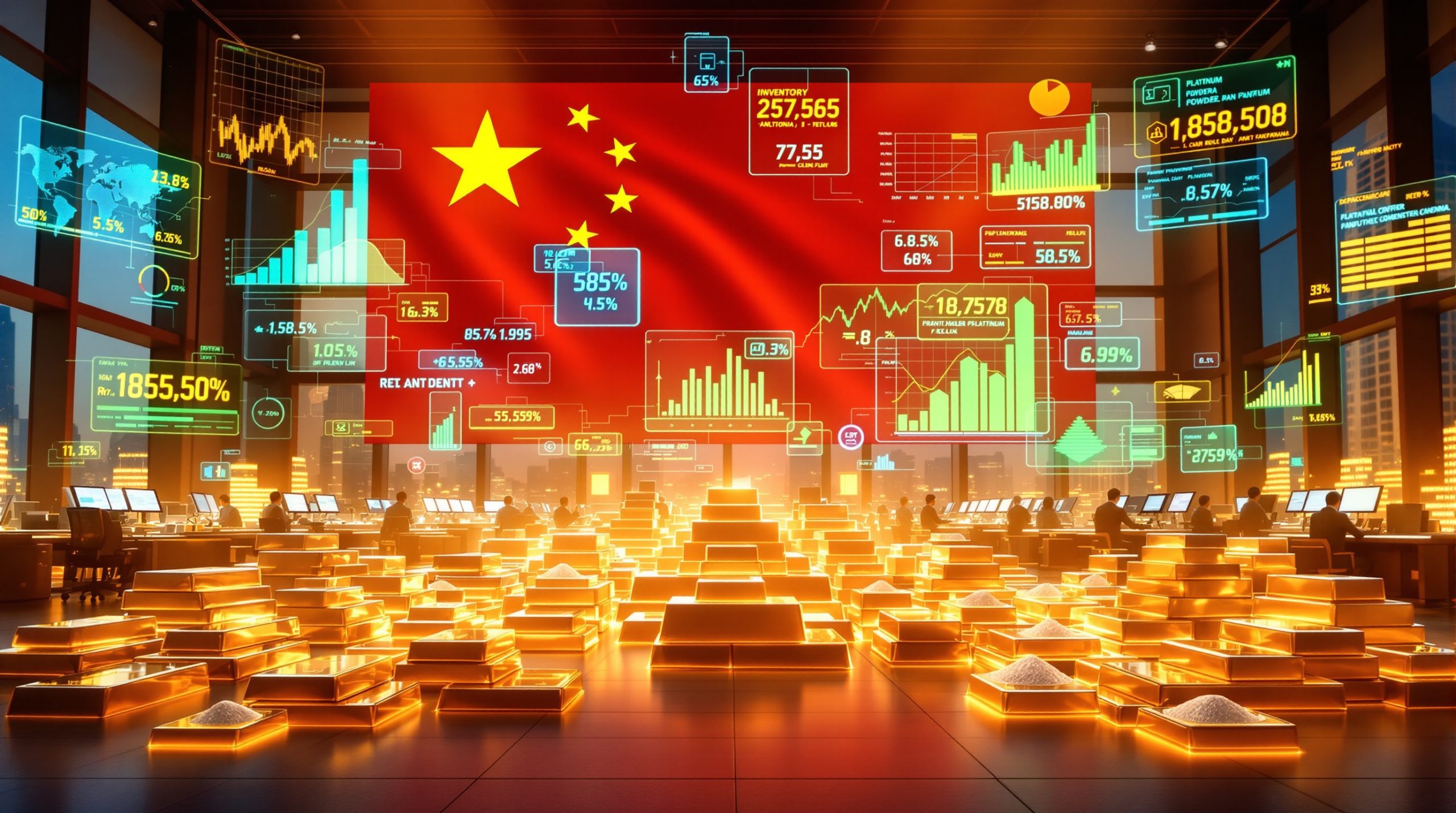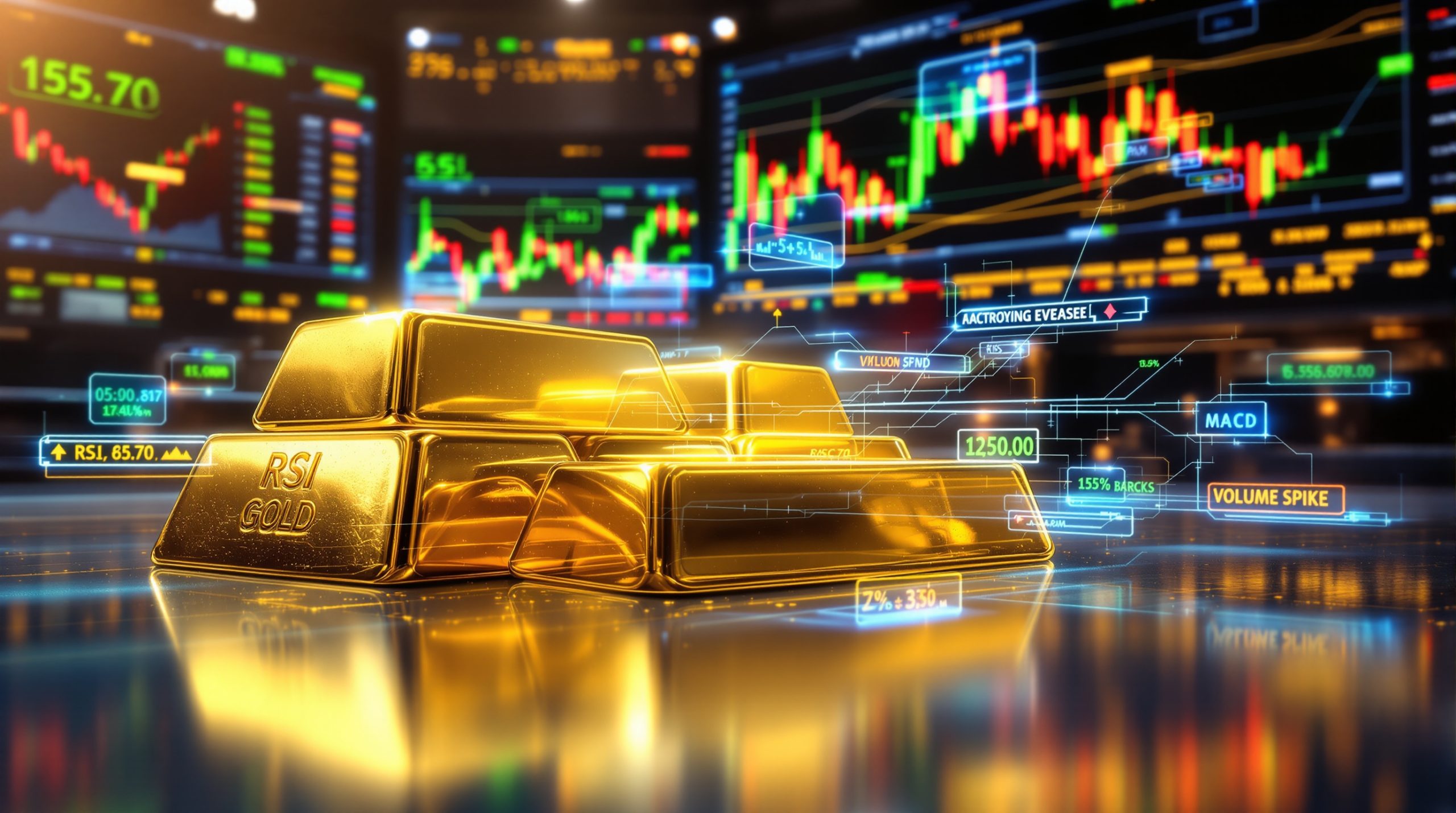How Has Russia's Gold Trade With China Changed Since 2022?
Chinese imports of Russian precious metal ores and concentrates have undergone a remarkable transformation in recent years, showing significant growth momentum. According to data from Trade Data Monitor (sourced from China's customs office), these imports—including gold and silver—surged by 80% to reach $1 billion in the first half of 2025 compared to the same period a year earlier.
This dramatic increase reflects both market conditions and geopolitical realities that have fundamentally reshaped global precious metals flows since Russia's military actions in Ukraine began in 2022.
Key Growth Factors Behind the Surge
Several interconnected factors have contributed to this remarkable growth in the Russia-China precious metals trade:
-
Record gold prices: Gold has appreciated approximately 28% in 2025 (as of July 21), creating favorable revenue conditions for Russian exporters
-
Geopolitical tensions: Ongoing global conflicts and trade disputes have increased gold's appeal as a safe-haven asset
-
Supply redirection: With Western markets largely closed to Russian gold, China has become an increasingly important destination
-
Market adaptation: Both countries have developed alternative trading mechanisms to facilitate precious metals commerce
Russia's Position in the Global Gold Market
Russia maintains its status as the world's second-largest gold producer with annual output exceeding 300 tons. This production capacity represents a significant portion of global supply, making Russia's trade patterns highly consequential for international markets.
The redirection of this substantial gold production away from traditional Western markets toward China represents one of the most significant shifts in gold market trends in recent years.
Why Has China Become Russia's Primary Precious Metals Market?
Western Market Access Restrictions
Since Russia's military actions in Ukraine began in 2022, the country has faced substantial restrictions in accessing traditional precious metals trading hubs:
-
London market exclusion: Russian gold producers lost access to the London Bullion Market, historically the world's primary gold trading center
-
New York trading limitations: COMEX and other U.S.-based exchanges implemented restrictions on Russian metal
-
Banking sanctions: Financial sanctions limited transaction capabilities with Western institutions
-
Refineries restrictions: Many European refineries stopped accepting Russian gold
These restrictions effectively closed off Russia's traditional export channels, necessitating a major pivot in trade relationships.
China's Strategic Importance
These circumstances have elevated China's role as a critical trading partner for Russian precious metals:
-
Alternative market access: China provides Russia with a major alternative buyer for its production
-
Mutually beneficial relationship: China gains access to significant precious metals supplies outside Western control
-
Industrial applications: Chinese manufacturing sectors utilize these metals in various high-tech applications
-
Strategic reserves: The arrangement potentially allows China to diversify its reserves away from dollar-denominated assets
The Bank of Russia, formerly the largest central bank gold buyer, has not resumed large-scale purchases following the 2022 events, leaving Chinese commercial and industrial buyers as the primary market for Russian producers.
What Domestic Factors Are Influencing Russian Gold Production?
Record Domestic Retail Demand
Beyond international trade, Russia's gold mining sector has benefited from unprecedented internal market dynamics:
-
Record high domestic consumption: Russian citizens have increasingly turned to precious metals as a store of value, with 2024 seeing record retail demand
-
Wealth preservation strategy: Gold purchases represent a hedge against currency fluctuations in an uncertain economic environment
-
Banking alternatives: Some consumers view physical gold as an alternative to traditional banking in the face of international financial restrictions
-
Tax advantages: Certain gold investments receive preferential tax treatment in Russia, further stimulating domestic demand
This robust domestic market has provided an important supplementary outlet for Russian gold production alongside the growing Chinese export channel.
Production Capacity Utilization
Russian mining operations have maintained strong production levels despite international challenges:
-
Operational continuity: Major mining operations have continued without significant disruption despite sanctions
-
Domestic refining capacity: Russia has developed substantial internal refining capabilities to process ore into market-ready bullion
-
Technology adaptation: Mining companies have adjusted to changing supply chain realities by modifying procurement and processing systems
-
Government support: Strategic importance of the sector has ensured continued investment and regulatory accommodation
Market Perspective: The continued strong production from Russian mines despite Western sanctions demonstrates the resilience of the country's gold sector and its ability to find alternative markets for its output.
How Are Other Precious Metals Performing in This Trade Relationship?
Platinum Group Metals Expansion
While gold receives significant attention, other precious metals analysis shows that platinum and palladium have also shown remarkable growth in the Russia-China trade relationship:
-
Palladium price surge: 38% increase in 2025 as of July reporting
-
Platinum appreciation: 59% price growth during the same period
-
Industrial applications: Both metals are critical for automotive catalytic converters and other industrial uses
-
Supply concentration: Russia's Norilsk Nickel is a dominant global producer of these metals
These price increases have significantly boosted the value of Russia's platinum group metals exports to China, contributing to the overall growth in Russian precious metals sales to China.
Norilsk Nickel's Strategic Pivot
MMC Norilsk Nickel, one of the world's largest producers of palladium and platinum, has strategically increased its exports to China:
-
Supply chain reorientation: The company has redirected shipments from Western markets to Chinese buyers
-
Processing partnerships: New arrangements with Chinese refiners have been established to handle Russian materials
-
Long-term contracts: Strategic agreements ensure market stability and predictable revenue streams
-
Product diversification: The company exports various forms of platinum group metals to meet different industrial requirements
This strategic shift by Norilsk Nickel exemplifies the broader reorientation of Russia's precious metals sector toward Eastern markets, particularly China.
What Are the Market Implications of These Trade Patterns?
Price Impact Analysis
The redirection of significant precious metals volumes has influenced global market dynamics:
-
Premium pricing structures: Different regional markets now show varying price levels for similar products, with discounts sometimes applied to Russian origin metals
-
Arbitrage opportunities: Price differentials create trading opportunities for intermediaries who can navigate the complex regulatory environment
-
Market segmentation: The global precious metals market has become more fragmented along geopolitical lines
-
Benchmark challenges: Traditional pricing benchmarks face relevance questions in this new environment of bifurcated markets
These developments have created a more complex global pricing environment for precious metals, with record gold prices analysis showing significant regional variations becoming more pronounced.
Investment Considerations
For market participants, these developments create both challenges and opportunities:
-
Supply chain transparency: Tracking metal provenance has become more complex with new trade routes and intermediaries
-
Regulatory compliance: International sanctions create compliance challenges for multinational companies dealing in precious metals
-
Portfolio diversification: Investors must consider geopolitical factors in precious metals allocation decisions
-
Market liquidity: Some market segments have experienced changes in liquidity conditions as trading patterns shift
Disclaimer: The precious metals market is subject to significant volatility and geopolitical influences. Investors should conduct thorough due diligence and consider consulting with financial advisors before making investment decisions based on shifting trade patterns.
How Might This Trade Relationship Evolve?
Future Growth Potential
Several factors suggest continued expansion of Russia-China precious metals trade:
-
Infrastructure development: Improved transportation and processing facilities support increased volumes between the countries
-
Financial mechanisms: Alternative payment systems facilitate transactions outside Western banking networks
-
Bilateral agreements: Government-level coordination enhances trade stability and predictability
-
Market diversification: Both countries seek to reduce dependence on dollar-denominated trading systems
The 80% year-over-year growth seen in the first half of 2025 may not continue at the same pace, but the structural shift in trade flows appears to be a long-term strategic realignment rather than a temporary adjustment.
Potential Challenges
Despite positive momentum, certain factors could constrain future growth:
-
Technological limitations: Some specialized processing capabilities remain concentrated in Western countries
-
Quality standards variation: Different quality specifications may create product acceptance challenges in new markets
-
Transportation logistics: Geographic distance creates shipping complexities and costs between Russian production centers and Chinese markets
-
Political uncertainties: Changes in either country's policies could affect trade patterns and relationships
The evolution of this trade relationship will depend on both countries' ability to overcome these challenges while capitalizing on the strategic advantages of their partnership in precious metals.
FAQ: Russian Precious Metals Exports to China
What percentage of Russia's gold production goes to China?
While exact percentages fluctuate, China has become the primary international destination for Russian gold exports since 2022, with gold market surge continuing through 2025. The $1 billion in precious metals trade during the first half of 2025 represents a significant portion of Russia's total production, though precise percentages are not publicly disclosed.
How do sanctions affect the pricing of Russian precious metals?
Sanctions have created regional price differentials, with Russian precious metals sometimes trading at discounts in certain markets. However, strong global demand, particularly from China, has helped maintain overall price levels for Russian producers. The 28% increase in gold prices during 2025 has benefited Russian exporters despite the trade restrictions, according to the latest gold price forecast.
Are there quality differences between Russian and other international gold supplies?
Russian gold production generally meets international quality standards. Major Russian producers like Polyus and Polymetal maintain high purity levels that satisfy Chinese market requirements. Any minor variations in ore quality are addressed during the refining process to ensure the final product meets market specifications.
What payment mechanisms are used in Russia-China precious metals trade?
Transactions increasingly utilize alternative payment systems outside the SWIFT network, including direct currency exchanges and bilateral settlement mechanisms. Both countries have developed financial infrastructure that reduces reliance on dollar-denominated transactions, facilitating continued trade despite Western banking restrictions.
How sustainable is the current growth trajectory in this trade relationship?
The 80% year-over-year growth rate reflects both market conditions and structural changes in global precious metals flows. While such dramatic percentage increases may moderate, the fundamental redirection of Russian exports toward Chinese markets appears to be a long-term strategic shift rather than a temporary adjustment. The strong price performance of gold, platinum, and palladium in 2025 has further cemented this relationship.
Important Note: The precious metals market is inherently volatile and subject to numerous geopolitical factors. Past performance and current trends should not be considered predictive of future outcomes.
Looking for Immediate Alerts on Major ASX Mining Discoveries?
Discover how to gain a market-leading edge with real-time notifications on significant ASX mineral discoveries through Discovery Alert's proprietary Discovery IQ model, turning complex mineral data into actionable investment opportunities. Explore historic discoveries and their substantial returns by visiting Discovery Alert's dedicated discoveries page and begin your 30-day free trial today.




